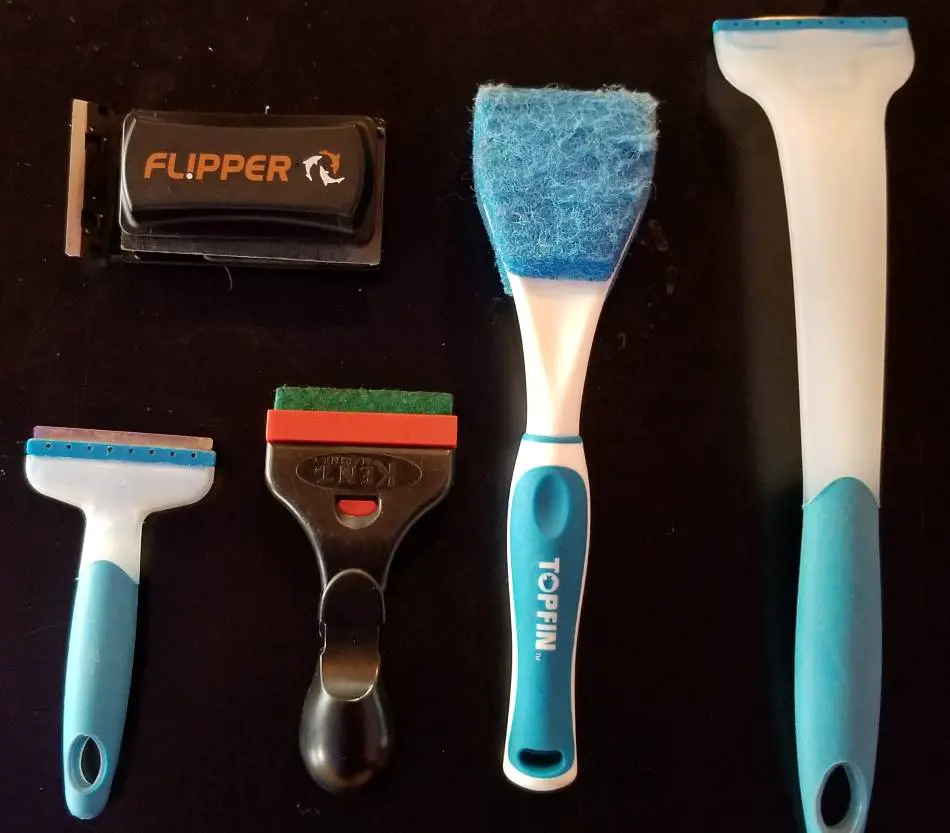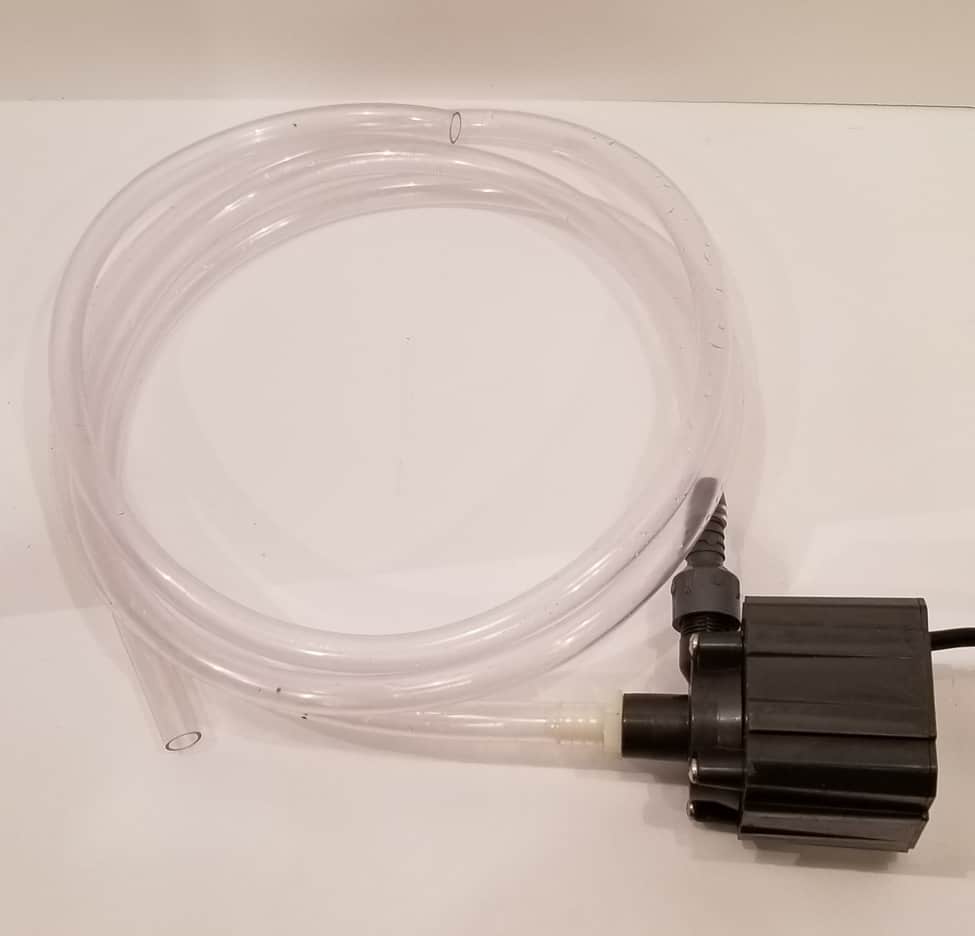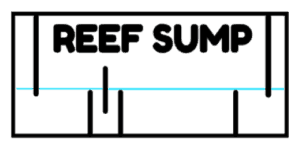
The reef aquarium sump is the engine of a successful healthy reef tank. Keeping your sump clean and in tip-top shape will help keep your reef tank stable and thriving. Neglecting your sump has the potential to negatively impact your tank’s ecosystem by increasing undesirable levels of phosphate and nitrate.
How do you clean your reef aquarium sump? There are many methods to clean a reef aquarium sump including siphoning out detritus, using a Shop-Vac to suck detritus out, and other general maintenance strategies.
How to Make and Use an Aquarium Sump Waste Vacuum
How to Use a Shop-Vac to Deep Clean Your Aquarium Sump
In this article, I share some of the cleaning methods and maintenance that I do on a regular basis to keep my sump clean and my reef tank healthy. My practical sump cleaning schedule can be broken down into weekly, monthly, quarterly, and as-needed frequencies.
Weekly Sump Cleaning
In my 75-gallon reef tank, I conduct weekly 10-gallon water changes. During weekly water changes, I take the opportunity to also do a weekly cleaning on my sump. Weekly sump cleaning includes changing filter socks, cleaning front acrylic, and emptying the protein skimmer cup if necessary.
Filter socks are standard in almost all sumps these days as they are a very effective form of mechanical filtration. If the socks aren’t regularly changed out with clean ones they can get clogged and back up the flow through the sump. I find weekly sock changes work well for my tank, but if you visibly see a dark dirty sock or the water level increases due to clogging, you may need to change the socks earlier.
In a previous article, I outlined my step-by-step process on the process I find to be the best and easiest way to clean filter socks.
Click here to find out about the best and easiest way to clean filter socks.
During weekly maintenance, I also like to clean the front visible glass or acrylic of the sump. I either use a scraper or a sponge to clean the front interior walls. I also clean the front of the sump with a paper towel and freshwater drying with a towel or a dry paper towel.
Lastly, I empty my protein skimmer collection cup if it is needed. In my tank, I typically only need to empty the collection cup every 2-3 weeks. Some protein skimmers also have the ability to drain the collection cup through a drain plug in the collection cup. It is possible to run a drain line into a larger container and push out emptying the collection tank even longer depending on the size of the container used. The one thing you don’t want to happen is for the cup to overflow and spill highly concentrated waste back into the aquarium.
Monthly Sump Cleaning
About every month I take the extra steps of removing any low levels of built-up organic waste on the bottom of my sump, clean the back and sidewalls of the sump, rinse off any sponges or other filters between sump baffles, and change filter media if needed.
There are a couple of easy ways to clean up small amounts of organic waste on the bottom of the sump. The easiest way is to simply take a turkey baster to low flow areas and kick the waste back up into the water column. A pump or powerhead can also be used to blow up detritus in the sump. For low levels of waste kicked up, your sump filtration should make quick work of it.
Another innovative way to remove built-up waste is to use an inline pump and filter sock to manually remove it from the sump. An inline pump has two hose connections and pulls water through one end and out the other. You can connect the hoses to each end and use one end to suck up detritus and the return end into a filter sock to catch the waste. This is a great option as the waste is removed from the sump and the same sump water is returned to the sump.

For most media, including gfo and carbon I typically change it out every month. This will vary greatly depending on what media you are using and your tank’s needs.
Clean as much of the side and back walls as much as you can using sponges and scrapers being careful to use acrylic safe tools if your sump is acrylic. Remove any sponge filters used between baffles and spray them off in the sink.
If you use a refugium with macroalgae this would be a good time to check on its health. I have very low flow in my refugium and utilize Chaeto for macroalgae. With the low flow in my refugium, I find that my Chaeto can collect detritus. I simply shake off the Chaeto to dislodge any build-up of detritus on the Chaeto. I also will thoroughly inspect the Chaeto and trim any die-off. If my Chaeto is filling up the refugium it may also be a good time to trim it back. I typically will trim about 20% of the Chaeto when harvesting. Harvested Chaeto can be given to fellow refers in need or even donated to your local fish store.
Quarterly Sump Cleaning
Quarterly maintenance is the time to clean most equipment in the sump including protein skimmer, media reactors, return pump, and all other equipment in the sump such as probes. The time the equipment can be removed from the sump disassembled and cleaned thoroughly. If there is a lot of build-up on your equipment you can soak if for a couple of hours in vinegar and water to loosen up build-up before scrubbing the pieces. Heaters are often overlooked in the sump, check these to make sure there isn’t the chalky build-up called precipitate coating your heaters. This can be cleaned off manually or after soaking in vinegar and water.
Pay special attention when removing and cleaning your return pump. This is a piece of equipment you don’t want to break. In fact, you never know when your return pump goes out, and to prevent a catastrophic tank die-off I keep a spare pump on hand. After reconnecting your return pump fire it up and check for any leaks at any of the connections to the return pump.
As Needed Sump Cleaning
If you completely neglect your sump for an extended period of time organic waste and algae can accumulate in the sump. This can get quickly out of hand leaving you with a thick layer of sludge on the bottom of your sump. Organic waste will continue breaking down making its way into the water column as undesirable levels of phosphate, nitrate, and potentially livestock lethal ammonia.
If your sump hits this level you may need to conduct a deep clean on your sump. This involves draining the sump and completely, cleaning out all the waste, and thoroughly cleaning the walls of the sump. Doing a deep clean of the sump may be necessary at times but does have its drawbacks potentially destabilizing the tank environment especially if the refugium is disturbed. I did an in-depth article on how to use a Shop-Vac to deep clean your sump.
Click here to learn how to use a Shop-Vac to deep clean your sump.
Your Own Practical Sump Cleaning Schedule
Depending on your reef tank’s needs, biological load, and equipment used you should create your own schedule and adjust it as necessary to hit the sweet spot of maintenance ease and the health of your reef tank. Keep a close eye on each piece of equipment and chamber and adjust cleaning frequency as you see opportunity. Keeping a journal or tank maintenance log can help identify trends and the right schedule. Stability is usually a key factor in maintaining a thriving reef tank, by being consistent in your maintenance you helping the tank run at optimal levels for longer periods of time.
Some Tools That I Use During Regular Maintenance
FL!PPER Flipper’s Magnetic Fish Tank Cleaner
This dual-sided magnetic aquarium cleaner magnet has a large soft cleaning and polishing pad on one side, perfect for quick daily cleaning. Then with just a twist of the outside handle, it Flips inside the tank to a hard busting, corrosion-resistant stainless steel scraper.
Kent Marine pro-Scraper
ProScrappers extendable cleaning tool is easy to adjust the handle length with a simple twist. ProScraper heads and blades are interchangeable and replaceable. Three blades are included.
Related Questions
What is detritus? Detritus is dead particles of organic matter. Organic matter can be composed of dead organisms and fecal matter throughout your reef tank. In nature, this organic matter collects on the bottom of the ocean floor and is commonly referred to as marine snow.
What is in the skimmer collection cup? The contents of the skimmer cup are often called skimmate. Protein skimmers collect and remove dissolved organic compounds out of the water column. Dissolved organic compounds are food and other waste that has broken down. These dissolved organic compounds when removed help control nitrate levels by removing the particles before they break down even more and release nitrogen. Low nitrate is beneficial to a healthy reef tank.

![12 Pack - 4 Inch Ring Filter Socks 200 Micron - Aquarium Felt Filter Bags -4 Inch Ring By 9.5 Inch Long [Short Version] - Fits Eshopps and Aqueon](https://m.media-amazon.com/images/I/41ZGAwgKONL._SL500_.jpg)


